[ad_1]
JOKER WEEK!
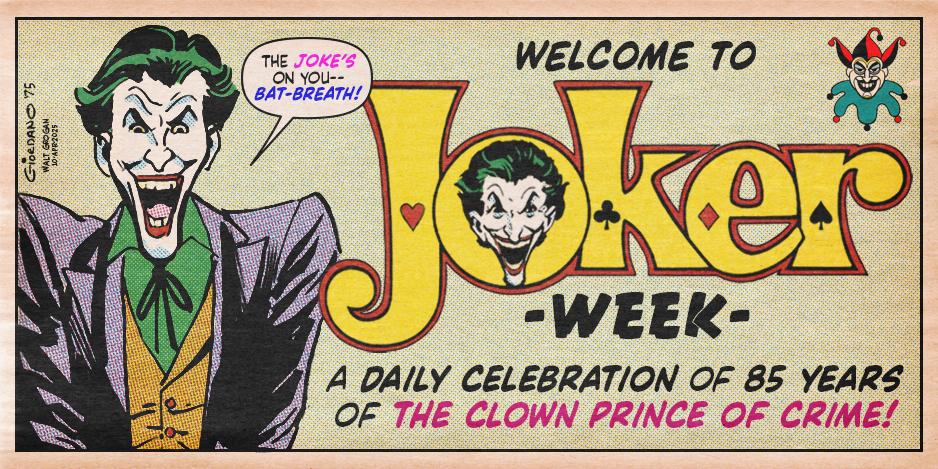
—
Welcome to JOKER WEEK! One of the greatest characters in comics history debuted 85 years ago, in Batman #1, on April 24, 1940 — and we’re celebrating with a series of features saluting the Clown Prince of Crime, just like we did with CATWOMAN WEEK. For the complete index of JOKER WEEK features, click here.
—

A selection of Joker items throughout the decades, including a few bonus ones!
The Joker. The Clown Prince of Crime. The Harlequin of Hate. He began his career as a bizarre-looking, murderous extortionist, with a flair for theatricality. Over the past decades he has evolved into a merry prankster, a homicidal maniac, an agent of chaos, and a nearly immortal monster. But much like his arch-enemy Batman, the Joker can take on these wildly divergent roles, and return again, ready for another makeover. The brilliant dichotomy of a figure of pure menace, wrapped in the façade of mirth, versus a noble hero cloaked in the nightmarish form of a bat is a legend for the ages. There is limitless story potential, on the comic page, and every other media fathomable. The Joker has conquered nearly all, and even garnered Academy Awards for two actors who have played the role.
It seems fitting that the very vain Joker would be one of comics’ most merchandisable characters. More so than any other foe, the Mountebank of Menace has been cast in plastic countless times, his grinning visage a constant on store shelves since the heyday of Batmania in 1966. What follows are 13 examples of why the Joker is, and always will be, comics’ most popular villain.
—
Justice League of America/Batman (Ideal, 1966). The first-ever figure of the Joker (and the first plastic figure of a comic supervillain) came from Ideal’s Justice League of America/Batman line in 1966. The Joker is portrayed laughing with his head thrown back, slapping his own knee. Nobody ever finds the Joker funnier than the man himself, so this is a perfect place to start. The Joker came molded in several solid colors, but unlike the heroes, the villains in this series never came painted.
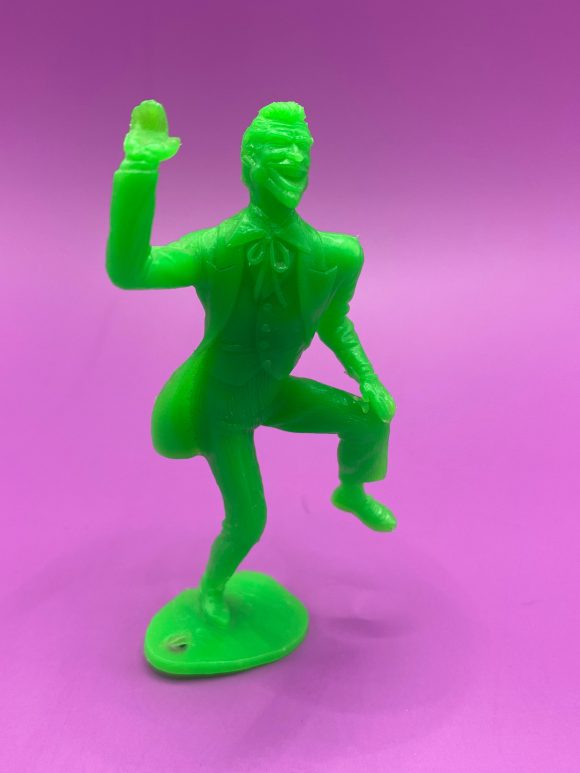
—
Batman Playset (Ideal, 1973). DC stalwart Murphy Anderson drew the packaging and figure art for this wonderful Batman Playset. Anderson was no stranger to the Batman family, having inked or penciled many covers and licensing images during the 1960s Batmania. Joker here looks like the classic Carmine Infantino-pencilled, Anderson-inked Joker seen on hundreds of products from 1966 to today. But he’s obviously up to no good, creeping up on an unsuspecting victim!
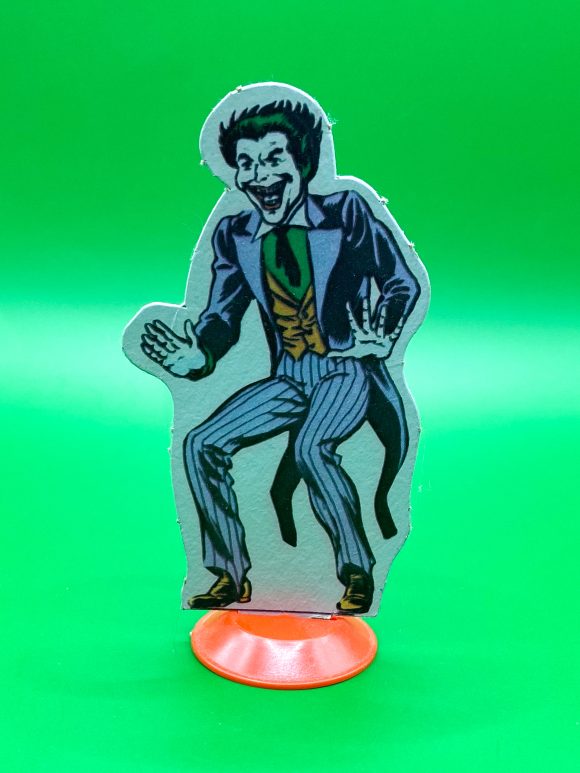
—
World’s Greatest Super Heroes (Mego, 1974). Of course, the Joker was one of the first villains released when Mego expanded its wildly popular 8” World’s Greatest Super Heroes line to include the Super Foes. The Joker is the best of that bunch, his head sculpt perfectly capturing his classic Silver Age look, and his maniacal glee. It showed a progression in Mego’s sculpting style from their earlier, softer portraits, and still stands as one of the best in the line. Despite the printed body suit, the costume works, largely thanks to the removable jacket.
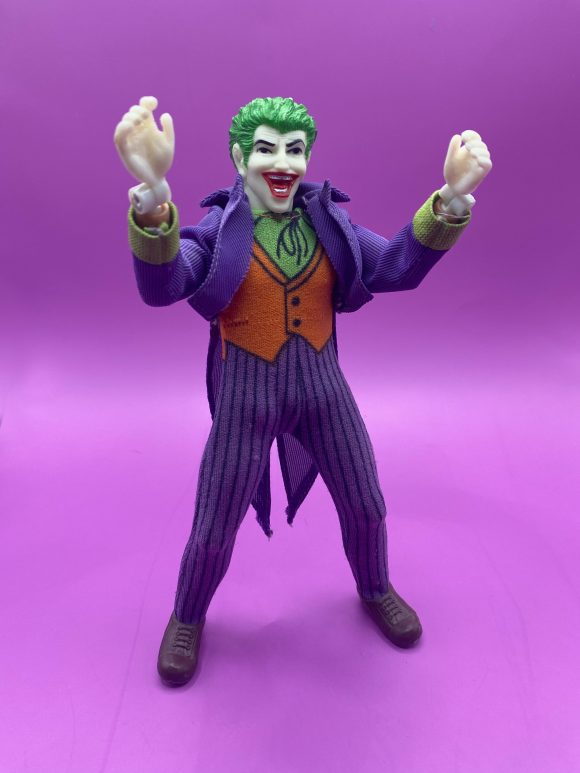
—
Super Heroes (Gulliver, 1981). This Joker figure, hailing from a promotion between Argentinean/Brazilian manufacturer Gulliver and Pepsi, rides the line between the classic Silver Age and Bronze Age looks. He’s essentially in that classic Infantino/Anderson pose with his cane, but look at his left hand. He’s holding a Laughing Fish, from the then fairly recent Englehart/Rogers/Austin run of Detective Comics! This has to be the first figural interpretation of that classic story, but as we’ll see, it becomes a common accessory for Joker figures in the decades to come!
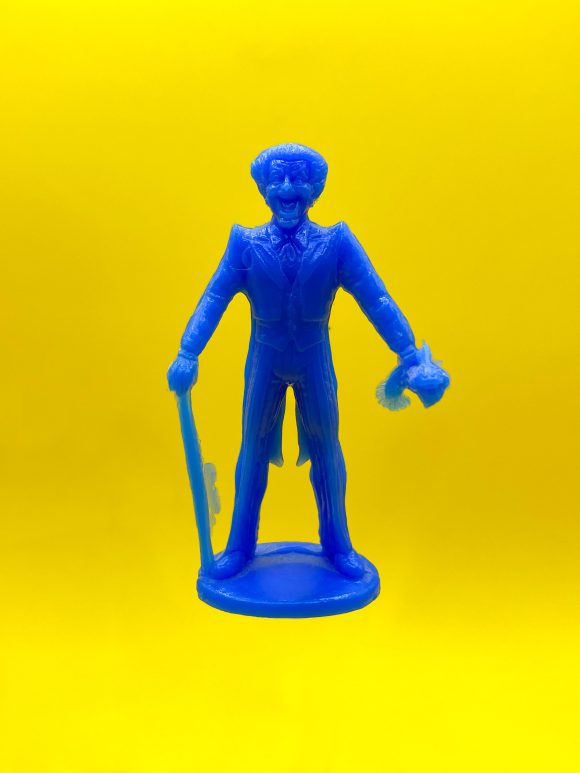
—
Super Powers (Kenner, 1984). Kenner’s Super Powers Collection is for many the definitive toy line of the DC characters, and that’s hard to argue against. Based primarily on the style-guide art of Jose Luis Garcia-Lopez (Praised Be His Name), the figures look like they stepped right out of late Bronze Age comics. The Joker is no exception. Garcia-Lopez had a history with the Hateful Harlequin, drawing him in his own title in the ’70s, and in the treasury-size company crossover Batman vs. The Incredible Hulk, among other assignments.
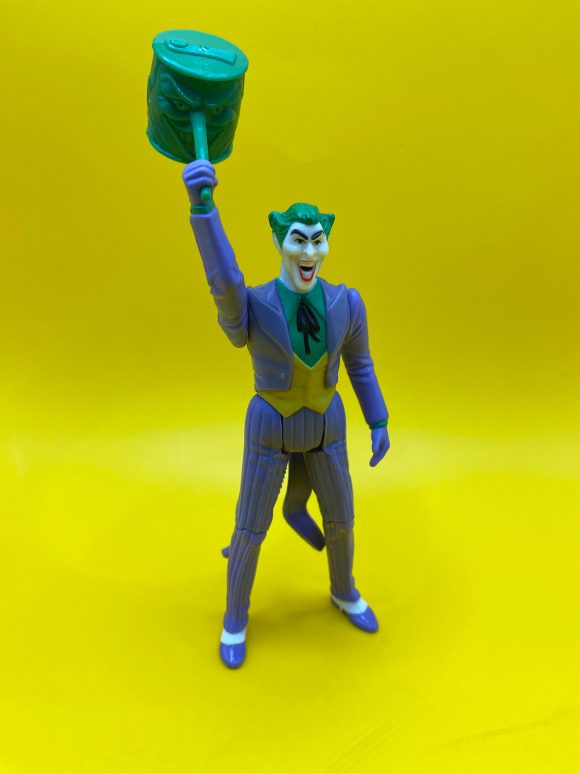
The figure’s face is one of the more extreme versions of Garcia-Lopez’s take, with an extra-elongated chin, and that signature side-wing hairdo. Like the other figures in this line, Joker comes with a Power Action feature, allowing him to deliver a crushing blow with his Madcap Mallet. The mallet was another influence from the style guide and would reappear as a pack-in with many Jokers to come!
—
Batman/DC Super Heroes (Toy Biz, 1989). Fledgling company Toy Biz nabbed the Batman and DC Super Heroes license for the 1989 film and used Kenner’s Super Powers designs as their starting point. The results are very mixed, but the Joker is one of their better offerings. There was no attempt to really capture the likeness of Joker actor Jack Nicholson, but this figure does appear a bit stouter than his Kenner cousin.
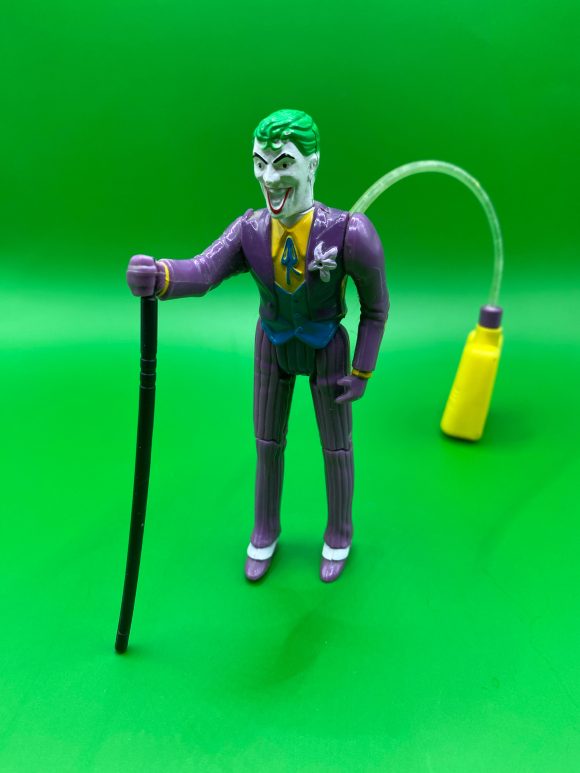
The accessories are surprisingly movie accurate, something Kenner would largely abandon when they got the license back the following year. The Joker comes with his hat, cane, and a bellows system that allows you to squirt water (or pretend acid) from his lapel flower. There are variations of the figure out there, some with an odd spit curl (like the figure pictured), and some without.
—
15” Presents Figure (Hamilton Gifts, 1990). This large figure was one of several released in the late ’80s/early ’90s by Hamilton Gifts, including Batman and Robin. The articulation was extremely limited with blow-molded, hollow bodies, but the sculpting is quite nice, especially the face. This is definitely the most disturbing Joker sculpt up to this time, thanks to the work of Tim Bruckner, who would go on to do work for DC Direct, and create even more nightmarish versions of the Clown Prince.
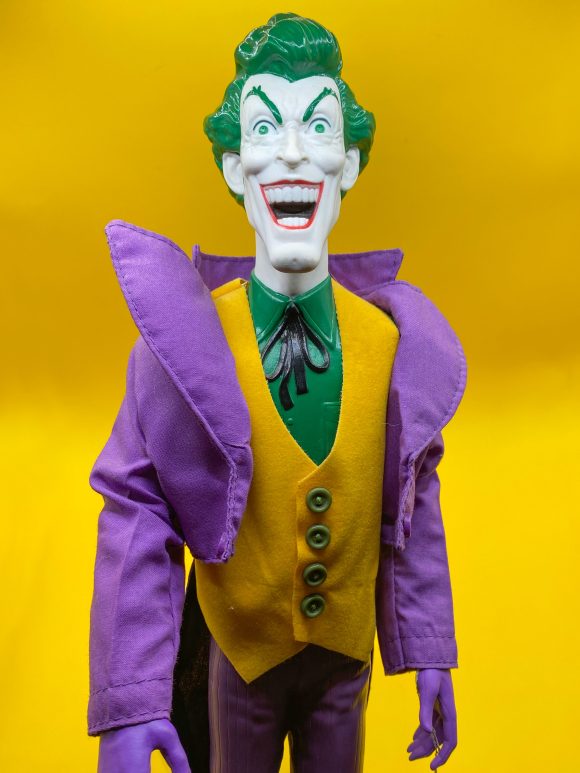
—
The Adventures of Batman and Robin (Kenner, 1997). This figure narrowly beat out the standard Batman: The Animated Series Joker for inclusion here. I give this one the spotlight because it is one of the few Joker figures to give us both his overcoat and hat. And his accessories are far more show-accurate than most in the otherwise excellent Kenner animated line. The tommy gun and bomb with the Joker’s own visage are straight out of the show.
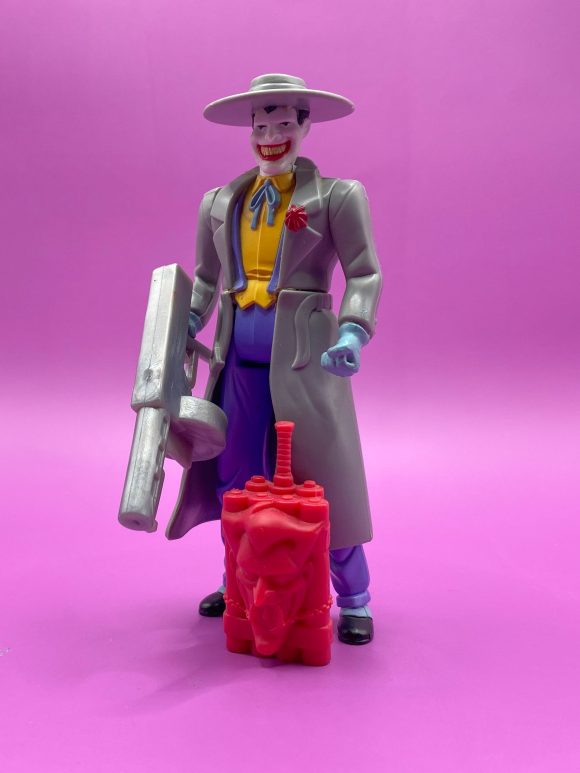
The animated Joker is perhaps the perfect amalgamation of the merry prankster and homicidal madman personas, masterfully balanced by Mark Hamill’s inimitable delivery. This figure captures that character flawlessly.
—
The Dark Knight: Movie Masterpieces (Hot Toys, 2008). Hot Toys has released many figures based on Heath Ledger’s instantly iconic (and Oscar-winning) portrayal of the Joker from Christopher Nolan’s The Dark Knight. The subsequent ones have better likenesses to the actor and his makeup design, but this was the first, and it’s no slouch either. The detailing on the clothing is of course top notch. The unnerving menace of the character is very apparent in the sculpt, evoking that feeling of not knowing whether to chuckle or cry. One of those figures you kind of want to keep an eye on in your display cabinet…
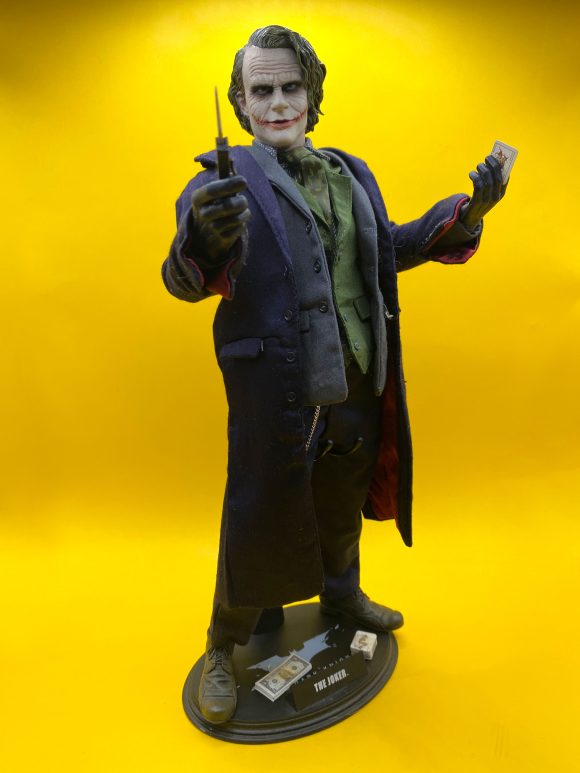
—
Joker 13” Deluxe Collector Figure (DC Direct, 2008). As mentioned in the Catwoman 85th anniversary collectibles article, DC Direct decided to enter the 12” figure market… and make their figures 1 inch bigger. It was a strange way to go and honestly put a lot of collectors off. Which is a shame, because overall these are nice figures, especially for the time. The head by master sculptor Bruckner looks a bit like Brian Bolland’s famous take on the Crime Clown, but there’s something more disturbing and grotesque about him. It’s his slightly unfocused eyes, and his gnarly teeth in particular.
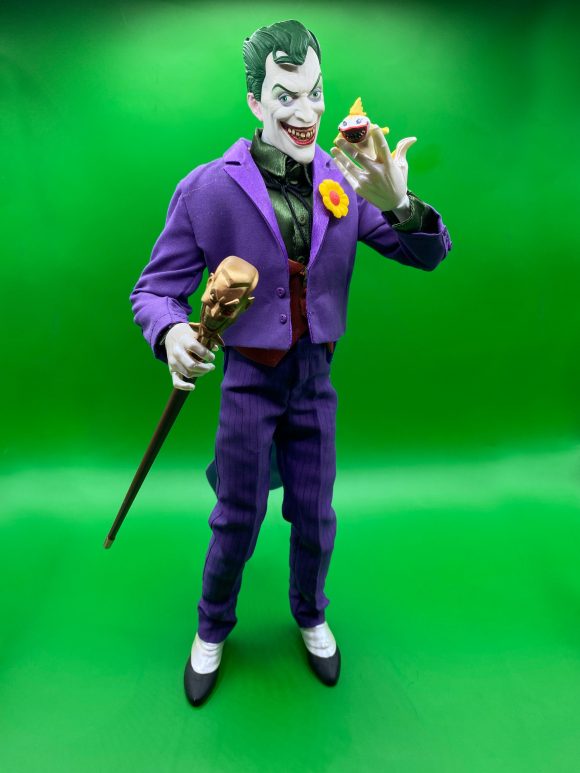
Curiously, the paints around the ears show a bit of Caucasian flesh, which harkens back to that puzzling design choice on the 1966 Batman gum cards from Topps. He comes with playing cards, a cane with his own face up top, and most importantly, a Laughing Fish, perhaps the first time one was included as a separate accessory.
—
DC Universe Classics (Mattel, 2009). The DC Universe Classics line is much beloved among DC fans for delivering well-sculpted, multi-articulated figures of the DC heroes in a very classic style, courtesy of Four Horsemen Studios. Those gents knocked it out of the park with this Joker, who comes packed with his signature cane, a deck of cards, and that now ubiquitous Laughing Fish, which unfortunately was unavailable for this photo. The Laughing Fish is an appropriate accessory, as the head sculpt perfectly captures the art of the man who designed those finny fiends, Marshall Rogers, one of the best ever to draw both Batman AND the Joker.
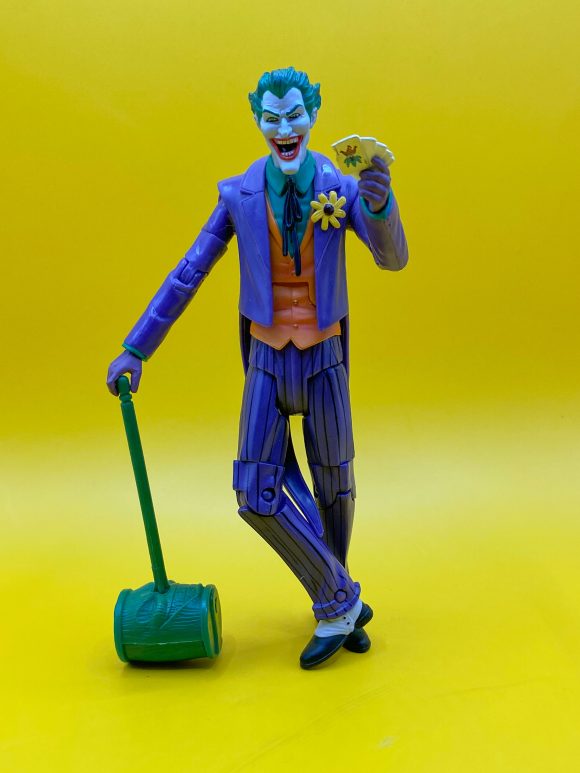
—
Batman: The Classic Television Series — Surfs Up! The Joker (Mattel, 2013). Mattel wasn’t the only action figure company to produce a figure from the infamous third-season episode of Batman, “Surf’s Up! Joker’s Under!” but I think they made it to market first. The likeness to Cesar Romero is pretty accurate, complete with visible mustache beneath his makeup. But the added baggies and the surf board just make this a hoot of a figure to own and set up, especially if you have the accompanying Batman. Romero seemed to have a genuine blast playing the Jeering Jester, and this figure nails that vibe.
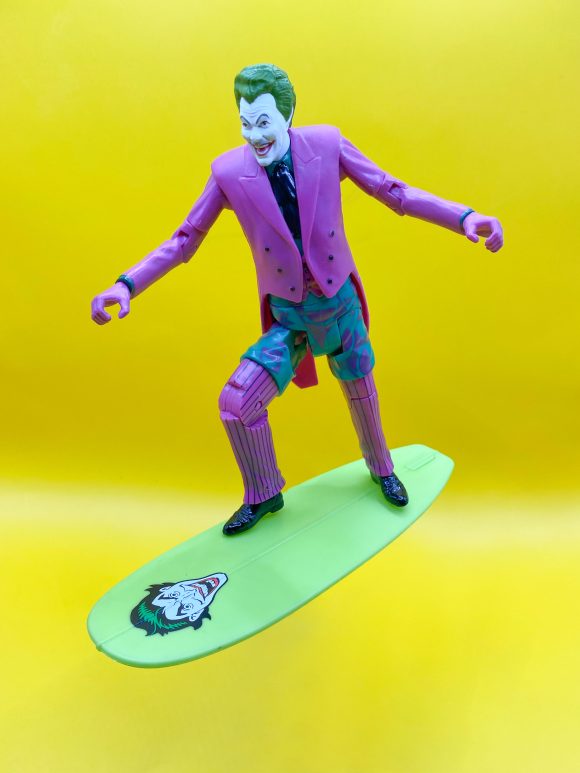
—
One:12 Collective The Joker: Golden Age Edition (Mezco, 2024). I featured this figure on some of the Golden Age cover re-creations I recently shared here on 13th Dimension, but it deserves all the accolades I can give it. This is a fantastic figure with multiple portraits showcasing the Joker at his most gleefully wicked. The accessories harken back to several classic stories, including a surprising appearance by the acid-spewing police badge from Detective Comics #476, “The Sign of the Joker.” More accurate to the Golden Age period is the Joker’s utility belt, straight out of 1952’s Batman #73, complete with faux, spring-mounted buckle.
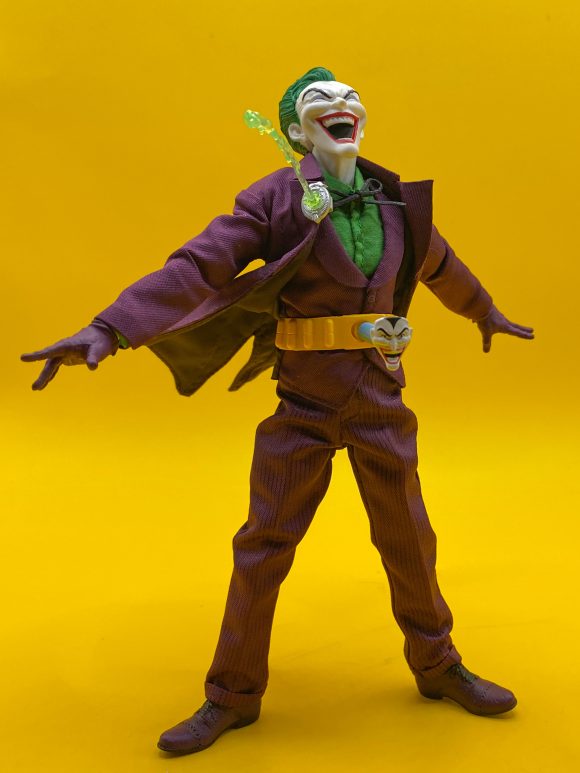
The figure overall is a fantastic interpretation of the character by the artist of that classic issue, Dick Sprang, the greatest of Batman’s Golden Age illustrators.
—
MORE
— The Complete JOKER WEEK Index of Features. Click here.
— CATWOMAN’s 85-Year History Through 13 CLASSIC COLLECTIBLES. Click here.
—
13th Dimension contributor Chris Franklin is a graphic designer, illustrator, writer, and podcaster, who co-hosts and produces several shows on the Fire and Water Podcast Network, including JLUCast. Check out his illustrative and design work at chrisfranklincreative.com.
[ad_2]
Source link



